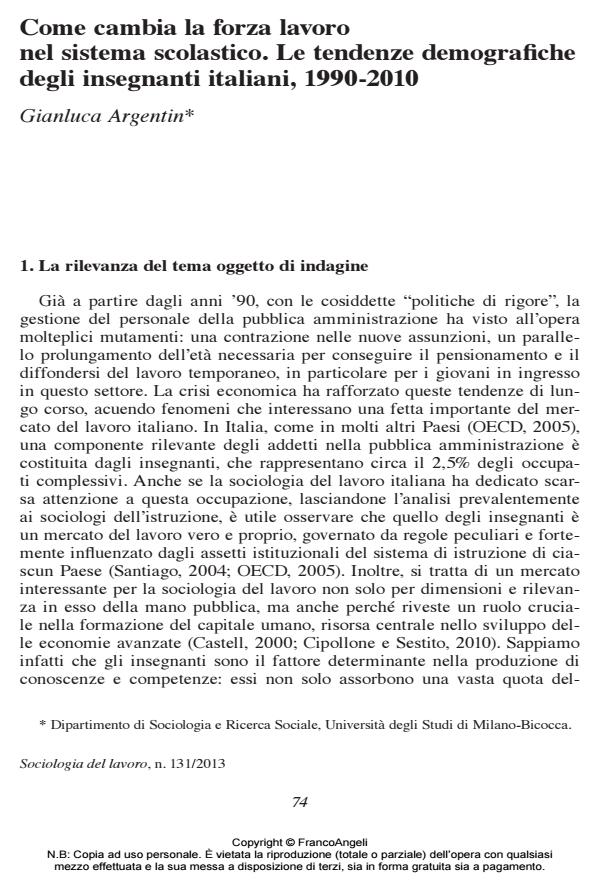How the labor force in the educational system changes. Demographic trends of Italian teachers, 1990-2010
Journal title SOCIOLOGIA DEL LAVORO
Author/s Gianluca Argentin
Publishing Year 2013 Issue 2013/131
Language Italian Pages 15 P. 74-88 File size 462 KB
DOI 10.3280/SL2013-131005
DOI is like a bar code for intellectual property: to have more infomation
click here
Below, you can see the article first page
If you want to buy this article in PDF format, you can do it, following the instructions to buy download credits

FrancoAngeli is member of Publishers International Linking Association, Inc (PILA), a not-for-profit association which run the CrossRef service enabling links to and from online scholarly content.
The article investigates the demographic changes affecting the Italian teachers during the period 1990-2010. Previous research detected feminization and ageing within this population, but only the latter distinguishes the teaching labor force. Recruitment processes, mainly in the public sector, played a relevant role in teachers’ ageing and in the increase of their occupational instability. This highly regulated labor market has not been directly affected by the economic crisis (at least until 2010). Concluding, the author makes suggestions for policy makers and economic sociologists.
Keywords: Teacher, Teacher labor market, Feminization, Ageing, Teacher recruitment, Teacher demographics
- Are there any job resources capable of moderating the effect of physical demands on work ability? A study among kindergarten teachers Sara Viotti, Mara Martini, Daniela Converso, in International Journal of Occupational Safety and Ergonomics /2017 pp.1
DOI: 10.1080/10803548.2016.1267976 - Giochi di prestigio Gianluca Argentin, in Quaderni di Sociologia /2013 pp.187
DOI: 10.4000/qds.469 - Work ability and burnout: What comes first? A two-wave, cross-lagged study among early childhood educators Sara Viotti, Gloria Guidetti, Ilaria Sottimano, Mara Martini, Daniela Converso, in Safety Science /2019 pp.898
DOI: 10.1016/j.ssci.2019.06.027
Gianluca Argentin, Come cambia la forza lavoro nel sistema scolastico. Le tendenze demografiche degli insegnanti italiani, 1990-2010 in "SOCIOLOGIA DEL LAVORO " 131/2013, pp 74-88, DOI: 10.3280/SL2013-131005